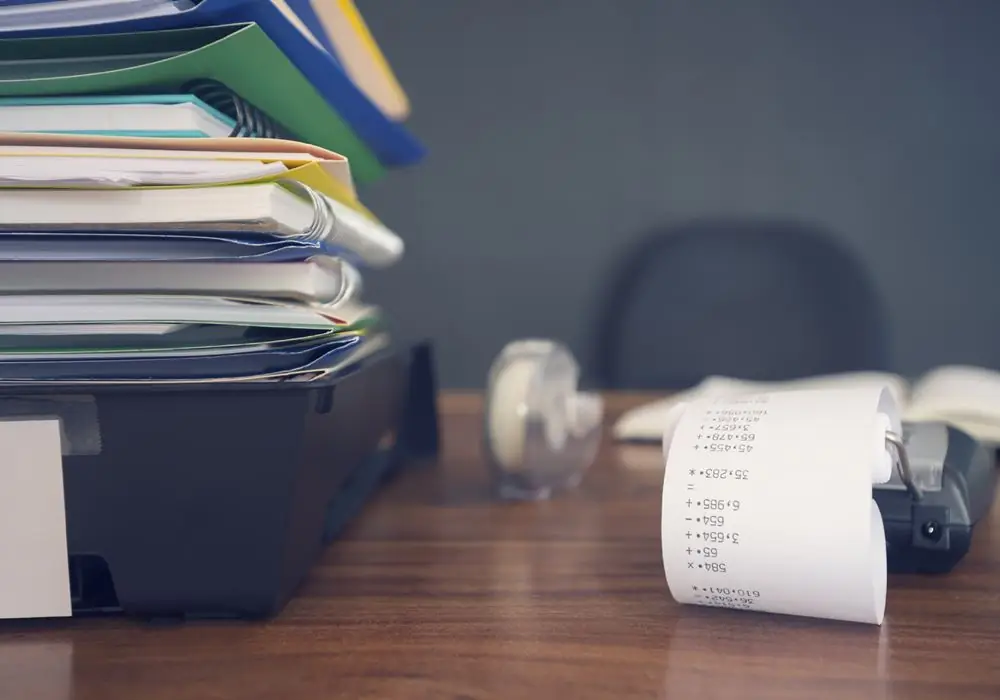2026 Author: Howard Calhoun | [email protected]. Last modified: 2025-01-24 13:10:32
People associated with the business sector are well aware of the decoding of UTII, STS, OSNO. When registering, business entities can choose the tax regime.

Deciphering UTII - a single tax on imputed income, USN - simplified, and BASIC - a general taxation system. However, the article will consider UTII.
General information
Taxation according to UTII is a special regime provided for individual entrepreneurs and organizations engaged in certain types of activities. Unlike the simplified tax system, the income actually received by the subject does not matter. The calculation of UTII for individual entrepreneurs and legal entities is based on the profit established (that is, imputed) by the state.
Features
Like any other special tax regime, UTII involves the replacement of several basic deductions with one payment.
Subjects using "imputation" are exempt from payment:
- NDFL (for entrepreneurs).
- Income tax (for legal entities).
- VAT (excludingexport).
- Property tax (except for objects, the base for which is determined as a cadastral value).
Subjects of law
To apply UTII, business entities must meet certain requirements:
- The number of employees should not exceed 100. However, this restriction, until December 31, 2017, does not apply to cooperatives and business companies established by the consumer union (society).
- The share of participation of other legal entities does not exceed 25%. An exception to the rule are organizations whose authorized capital is formed by contributions from public organizations of the disabled.
It should be noted that the tax in question (UTII) can be used until 2021. Subsequently, it is planned to be cancelled. In some regions (for example, in Moscow), the UTII taxation regime has not been established.
Activities
First of all, enterprises providing services can switch to "imputation". UTII applies to:
- Veterinary and household services.
- Maintenance, repair, vehicle wash.
- Providing storage or parking spaces for vehicles.
- Freight and passenger transportation. In this case, the number of used vehicles should not exceed 20.
- Provision of premises for living/accommodation for a certain period. The area of the object should not be more than 500 square meters. m.
Another type of activity covered by UTII is retail trade. Trade enterprises that carry outselling products through:
- Pavilions and shops with a sales area of no more than 150 sq. m.
- Premises (stationary) without halls and non-stationary facilities.
UTII tax can also be paid by entities working in the field of catering at facilities with a hall area of \u200b\u200bno more than 150 square meters. m, or without halls.

"Vmenenka" is also provided for activities such as:
- Placement of advertising on vehicles or outdoor structures.
- Transfer for temporary use/ownership of trading places or plots of land.
Important points
At the end of November 2016, by order of the Government, a new list of activity codes for household services was approved.
In each municipality, local authorities have the right to independently establish a list of activities that are subject to "imputation". Accordingly, this list may differ in different administrative-territorial units.
How to start using the mode?
An application for the transition to UTII is submitted within 5 days from the start of the relevant activity. The business entity must issue two copies of the document.
For organizations, the UTII-1 application form, for individual entrepreneurs - UTII-2.
The document should be submitted to the tax office at the place of business. If the entity carries out a peddling or distribution trade, advertising on transport, is engaged in freight and passengertransportation, then the application is sent to the IFTS at the address of location (for legal entities) or residence (for individual entrepreneurs).
It happens that activities are carried out in several districts of one city at once or in several points of the district. In such cases, there is no need to register with each IFTS.
Within five days after receiving the application, the tax office sends a notification. They confirm the registration of the subject as a UTII payer.
Calculation rules
Subjects using the UTII taxation regime determine the amount of deductions to the budget according to the formula:
Tax=Base Yield x Physical indicator x K1 x K2 x 15%.
- The state establishes the basic profitability for 1 unit of a physical indicator, depending on the type of activity code.
- Phys. the indicator is expressed, as a rule, in the number of employees, square meters, etc.
- K1 is the deflator coefficient. The value of this indicator is set annually by the Ministry of Economic Development. For 2017, the coefficient is the same as in 2015-2016. It is equal to 1,798.
- K2 is the correction factor. It is set by municipal governments to reduce the amount of payment.

You can find out the correction factor on the website of the Federal Tax Service. Select a region at the top of the page. A redirection will take place, after which a normative act with the necessary information will appear in the "Peculiarities of regional legislation" section (below).
It is worth noting thatfrom 1 Oct. 2015, local authorities were given the opportunity to change the UTII rate. The value can be in the range from 7.5 to 15%. The indicator depends on the category of the payer and the type of activity.
Calculation for the quarter and for the month
To calculate the quarterly amount, you must add the amount of tax calculated for the months. You can also multiply the amount for 1 month. by 3. However, this is allowed only if the physical indicator remained unchanged throughout the quarter. If there were adjustments, the new value is taken into account from the month from which it has changed.
To calculate the tax for an incomplete month, the deduction for the entire period is multiplied by the number of days during which the activity was actually carried out. The resulting value is divided by the number of calendar days.
If the subject conducts several types of activities that fall under UTII, the calculation for each is made separately. After that, the received amounts must be added up.
When conducting activities in different MOs, calculation and payment are made for each OKTMO.
Decrease deductions
Business entities conducting activities subject to UTII, without employees, can reduce 100% of the tax by the amount of fixed amounts paid in the reporting period for themselves.
Entrepreneurs can choose the optimal schedule for deducting insurance premiums. The main thing is that the required amount is credited to the Fund's account from January 1 to December 31 of one year.

In addition, as indicated in the letter of the Ministry of Finance dated 26Jan. 2016, business entities can reduce the amount of contributions deducted in another quarter if the payment was made before the submission of the UTII declaration for the past period.
Thus, an entrepreneur can reduce the amount of deductions for 1 quarter on insurance premiums paid before April 25.
If deductions were made in one reporting period, in another (for example, in the fourth quarter) they can also be taken into account when calculating the tax amount.
Business entities with employees have the right to reduce the amount of deductions by 50%. This rule came into effect on January 1st. 2017 A 50% reduction limit applies to quarters in which the person had employees.
Example
Let's consider the calculation of the reduction of the tax amount for insurance premiums. Let's take the following initial information:
- In 2017, an individual entrepreneur in Balashikha (Moscow region) provided shoe repair services.
- Basic yield - 7500 rubles.
- As a physical. indicator is the number of employees (including the entrepreneur himself). During the year it was equal to 2.
- K1 - 1, 798, K2 - 0, 8.
- Each month, the entrepreneur paid insurance premiums for the employee. In total, 86 thousand rubles were paid
- For himself, the entrepreneur deducted 27992 rubles. (fixed payment of 6998 rubles quarterly).
Now let's calculate the tax.
Since the physical indicator has remained the same throughout the year, the amount will be calculated the same way:
7500 x 2 x 1, 798 x 0.8 x 3 x 15%=9709 R.
This value should be reduced bycontributions for the employee and a fixed amount for the entrepreneur, but not more than 50%. Accordingly, 9709 x 50%=4855 rubles
Calculation example without employees
Take the following initial information:
- Subject provided veterinary services in Smolensk in 2017.
- The value of the basic yield is 7500 rubles.
- Physical indicator - the number of employees, including the entrepreneur. During the year it did not change and amounted to 1.
- K1 - 1, 798; K2 - 1.
- Each quarter, the subject deducted the sums insured for himself. Their total size is 27992 rubles
As in the previous example, the monthly payment amount is the same, since the physical. indicator did not change. Accordingly:
7500 x 1 x 1, 798 x 1 x 3 x 15%=6068r.
This amount may be reduced by the full amount paid. Since the amount of the insurance contribution is greater than the tax, the entrepreneur does not owe anything to the budget at the end of the quarter.

Timing
The quarter is used as the tax period for the deduction of amounts. The deadlines for paying the calculated amount and filing a UTII declaration are given in the table:
| Quarter | Payment | Reporting |
| 1 | 25.04.2017 | 20.04.2017 |
| 2 | 25.07.2017 | 20.07.2017 |
| 3 | 25.10.2017 | 20.10.2017 |
| 4 | 25.01.2018 | 22.01.2018 |
Cashier for individual entrepreneurs on UTII
The issue of the need for the installation of cash registers by entrepreneurs on the "imputation" remains debatable today. Despite the controversy, experts recommend that entrepreneurs on the simplified tax system and UTII introduce new equipment into their activities. Let's turn to legislation.
In 2016, a law was passed providing for the phased introduction of new equipment into the activities of entrepreneurs.
For large enterprises, chain stores that sell goods at retail or provide services, the transition to new cash desks was supposed to end before January 1, 2017
As for small and medium-sized individual entrepreneurs operating under the simplified tax system or UTII, the regulations provide for some relaxations for them. These entrepreneurs need to install equipment during 2017
It is also worth saying that all enterprises need to replace fiscal drives every year. Entrepreneurs using the simplified tax system and UTII must do this every 3 years.
Advantages and disadvantages of UTII
The advantages of the mode include:
- Simplified accounting, both tax and accounting.
- The ability to combine UTII with other modes, depending on the type of activity.
- Independence of the payment amount from the income received.
- Possibility to reduce the deduction by the amount of the insurance premium.
Amongshortcomings analysts note:
- Fixed income set by the government. An entrepreneur may receive a smaller amount of profit than he is charged, but he still has to pay tax.
- Limits on physical indicators. Some entrepreneurs cannot apply UTII precisely because of them.
- Mandatory registration at the place of business (with some exceptions).
Household services
In this sector, entrepreneurs on UTII have a lot of difficulties.

First of all, it must be said that household services can be provided exclusively to individuals. This means that if there are organizations among the clients of the enterprise, UTII cannot be applied.
As stated in Art. 346.26 of the Tax Code, the exact list of services falling under UTII must be determined according to the OKUN (All-Russian Classifier of Services). Meanwhile, this classifier, according to experts, was not developed for use for tax purposes. The same services, for example, can be found in different sections, certain types are described in great detail, while others are not mentioned at all.
For example, an entrepreneur sells plastic doors and windows and provides installation services. If he works with organizations, then he cannot apply UTII. However, if an agreement is concluded with an individual and indicated in the installation order, such activity will no longer be considered a sale, but the provision of a service.
Officers tend to interpret laws literally. For example, in one ofLetters from the department of the Ministry of Finance explain that the installation of windows in a private house during construction cannot be considered a personal service.
There is, however, another opinion. Another letter from the same department deals with solarium services. They, it is worth saying, are not mentioned in OKUN. It is logical to assume that solarium services do not belong to household. However, they are mentioned in OKVED (classifier of types of economic activity). Solarium services are contained in the same section as sauna and bath services. Taking this into account, officials draw the following conclusion. If solarium services are provided in a sauna or a bath, then they are domestic, and if in a beauty salon or a hairdresser, then they are not. Accordingly, in the latter case, UTII cannot be applied.
Veterinary Services
Taxation when they are granted does not depend on the status of an economic entity. He can act both as an individual entrepreneur and as an organization.
The list of services, however, must be looked at OKUN. A similar rule applies to maintenance, repair, and vehicle washing services.
Retail
The definition of this type of activity in the Tax Code is given through retail sales contracts. However, their features are not fixed in the Code. Accordingly, the provisions of the Civil Code apply.
According to Article 492, when retailing, products are transferred to the buyer for family, home, personal or other non-business use.
Can a business entity carry out transactions that are notrelated to entrepreneurship? Quite. For example, it can be a charitable activity. In addition, some legal entities are not en titled to carry out entrepreneurial activities. Accordingly, their use of the product sold at retail can be regarded as "other", non-commercial. Does this mean that UTII can be used?
After some hesitation, the Ministry of Finance came to the conclusion that the special regime can be applied, with the exception of operations under supply contracts.
Accounting and reporting
All individual entrepreneurs and organizations using UTII must keep records of physical. indicators. How exactly this should be done is not explained in the Tax Code.
Organizations must submit a declaration, provide reports. Individual entrepreneurs are exempted from these duties.
Accounting statements differ depending on the category of organization. In general, it includes:
1. Balance (f. 1).
2. Reports on:
- financial results (f. 2);
- money flow (f. 4);
- designated use of financial resources (f. 6);
- changes in equity (f. 3).
3. Explanations in textual and tabular form.
Combination with other modes
UTII can be used without any problems with systems such as USN, ESHN, OSNO.
It is necessary to take into account that it is not allowed to carry out one activity in different modes. Separate accounting is kept for each system, reports are submitted and taxes are paid.

Loss of rightto use UTII
An individual entrepreneur or legal entity loses the opportunity to apply the special regime if the average number of employees at the end of the year exceeded 100 people. or the share of participation of third parties has become more than 25%.
If an economic entity uses only UTII, then if violations are detected, it will be transferred to the OSNO from the quarter in which they were committed. If the USN is additionally applied, then there is an automatic transfer to "simplified". You do not need to re-submit an application for the transition to the simplified tax system.
Recommended:
Leasing: advantages and disadvantages, main function, classification, tips and tricks

Definition, functions, advantages and disadvantages of leasing as a form of financial activity. General information, classification of leasing relations. Pros and cons of buying a car on lease, as the most common product. Recommendations for choosing a leasing company
Medical Representatives: Key Responsibilities and Sample Resume. Advantages and disadvantages of the profession

On the modern Russian pharmaceutical market today there are qualitative changes, its active growth is observed. Due to the introduction of new production technologies and the promotion of drugs by domestic manufacturers, their own competitiveness increases
Taxation "Income minus expenses": features, advantages and disadvantages

Income minus expenses taxation has many significant advantages for every entrepreneur over other systems. The article explains when this tax regime can be used, as well as how the amount of the fee is correctly calculated. The rules for compiling a tax return and the nuances of maintaining KUDiR are given
Common taxation system: advantages and disadvantages, transition

The general taxation system is considered the most complex regime in the Russian Federation. The article describes how you can switch to this system. All taxes that individual entrepreneurs and companies have to calculate and pay are listed. Various declarations and reports that need to be submitted to the Federal Tax Service on a regular basis are indicated
Types of taxation and their characteristics. What type of taxation to choose

Today we will study the types of taxation for legal entities and entrepreneurs. What are they like? And what is better to choose in this or that case? Each individual entrepreneur should know the pros and cons of existing tax payment systems. Otherwise, the business may fail. All this and more will be discussed below

